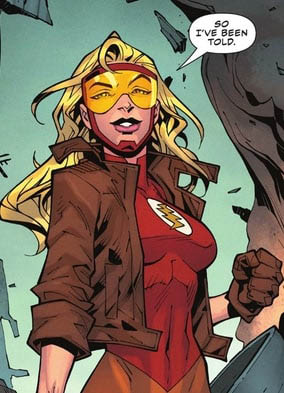More Fun Comics #71 (1941)
written by Mort Weisinger
pencils by Chad Grothkopf (maybe)
cover by Howard Sherman
Unlike the Quality books, you can rarely see when a DC book introduces a new character from the cover; we’re not here for Doctor Fate.
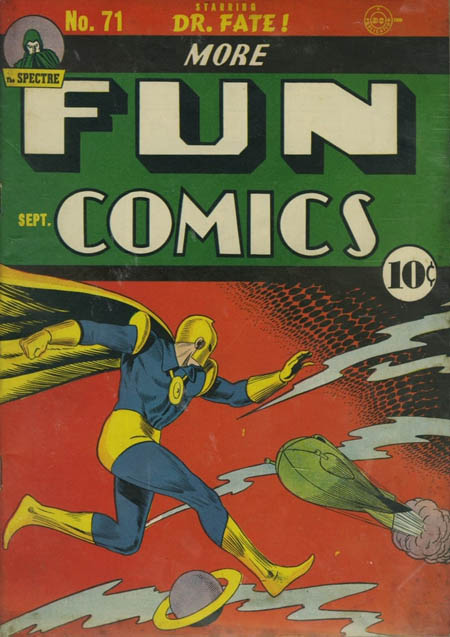
Instead we’ll focus on Johnny Quick, a totally original character that doesn’t take any inspiration from the Flash.
The story is by Mort Weisinger, future legendary editor of the Superman books; we’ve talked about him plenty of times on the site, but this is the first time he shows up as a writer.
It won’t be the last on this retrospective.
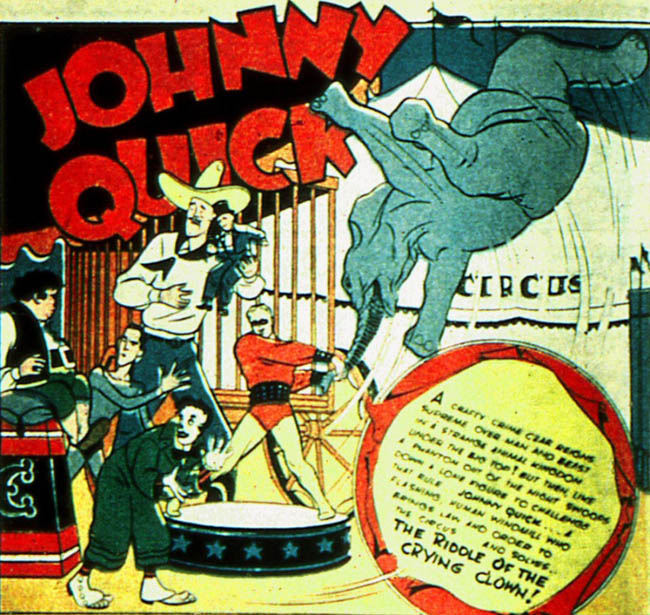
There doesn’t seem to be a consensus on who is the artist. The most credited one is Chad Grothkopf, but it’s not 100% confirmed.
He was a prolific artist, mostly known for the creation of “Hoppy the Marvel Bunny” for Fawcett Comics.
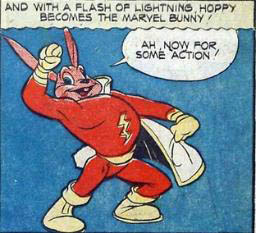
Apologies for the quality of the scans, by the way. This is the best I found, but some of the text is barely readable.
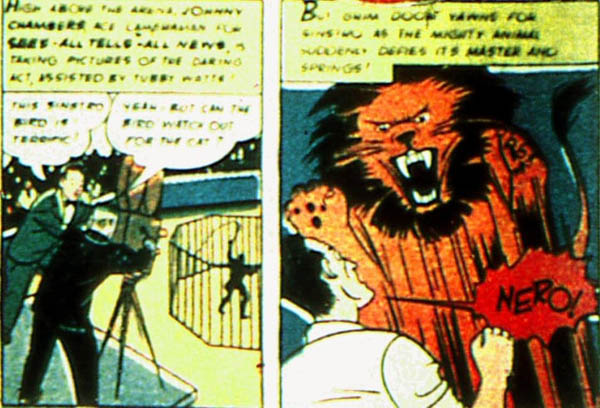
A lion is out of control at a circus, so Johnny Quick shows up to save the day by headbutting him.
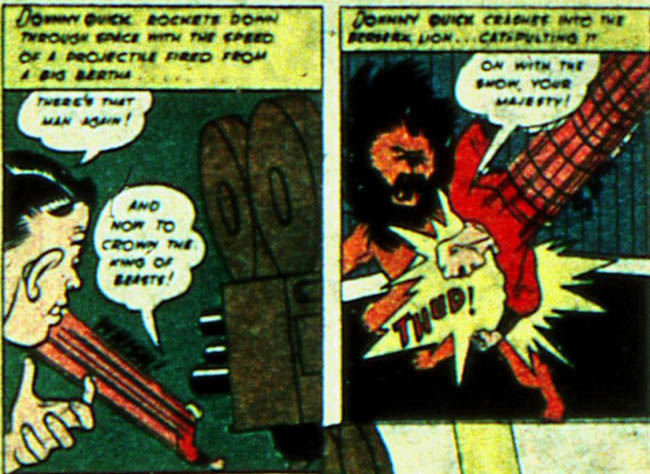
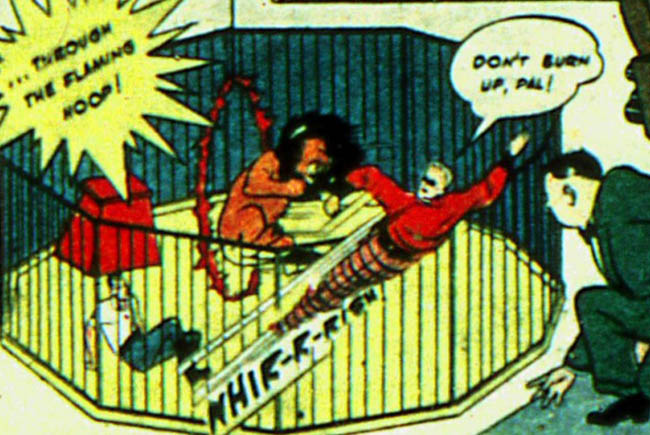
A flashback tells us how Johnny Quick (which disappointingly is not his real name, he’s Johnny Chambers) got his powers.
It’s thanks to a mathematical formula given to him by a professor, which “coordinates gravity and electricity”.
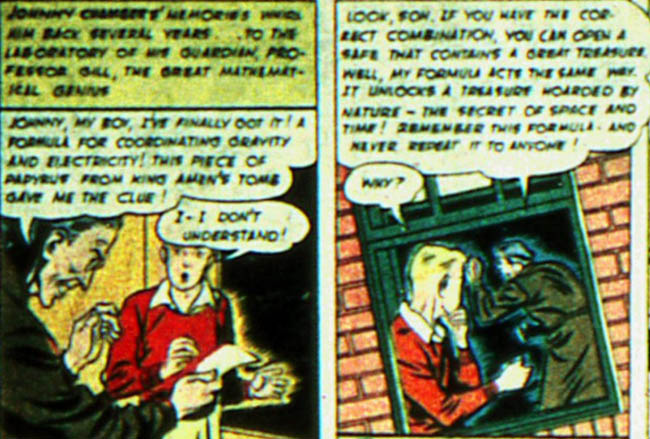
All you have to do to get superpowers is to say “3X2(9YZ)4A”.
Yep.
Math gives you superpowers.

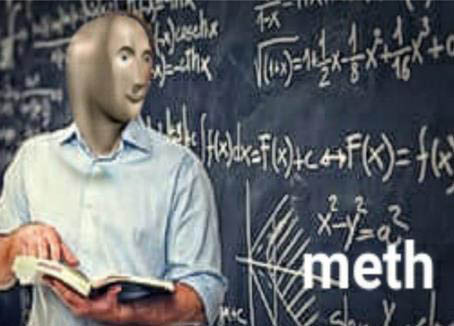
But of course the professor is already suffering from Mentor Figure Disease, which will conveniently kill him off-screen.
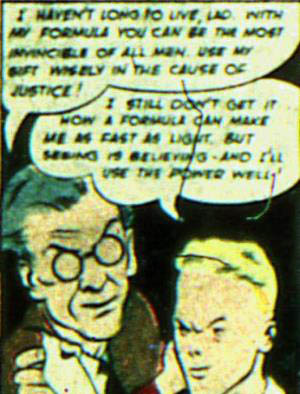
We are then given a montage of the first cases that Johnny Quick solved, which frankly sound more interesting than the actual story.
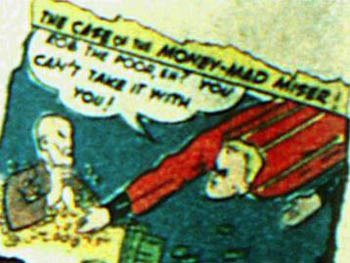
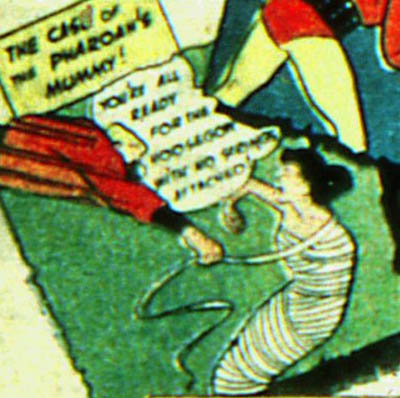
Back to the circus story, turns out that the lion went mad because he saw a crying clown.
Sounds legit.
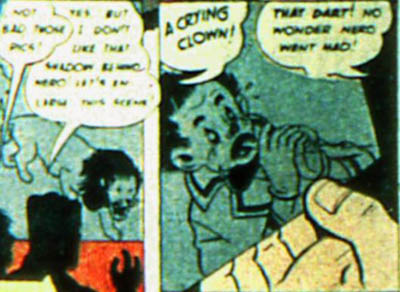
I’m not really sure how this whole formula thing is supposed to work. How is it a secret if Johnny keeps saying 3X2(9YZ)4A out loud?
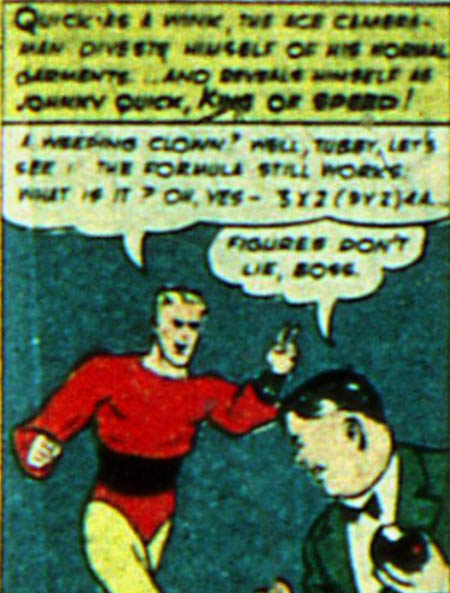
If you’re only familiar with the modern version of Johnny Quick who is just a regular speedster, the Golden Age one is weird.
Not only he can fly (???), but he has to say the formula Z25Y(2AB)6 to either land or slow down.
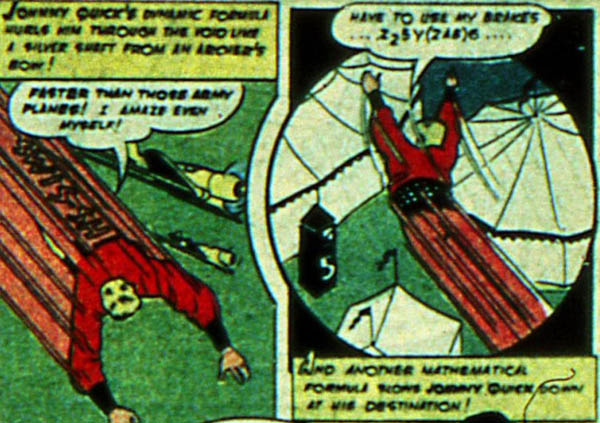
The sad clown is then threatened to be killed by elephant…
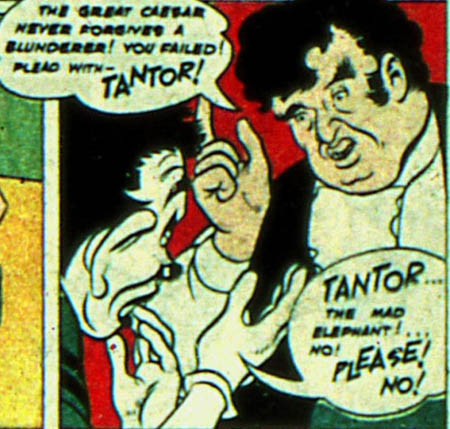
…until Johnny Quick shows up to beat him up.
What is weirder, the fact that he clearly has super-strength or that the first TWO fights involve animal abuse?
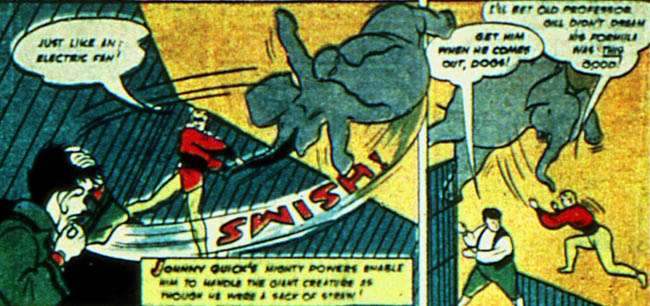
Getting information from the circus performers is difficult. Perhaps because they’re scared by just how ugly Johnny is being drawn.
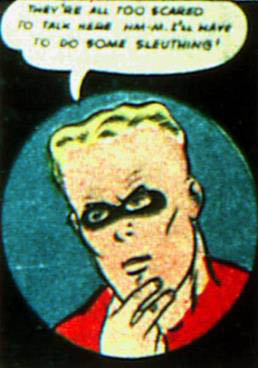
Then the Governor is threatened by the circus strongman. Are we supposed to think a guy who rips a phone book in half is going to be a problem for a guy who threw an elephant?
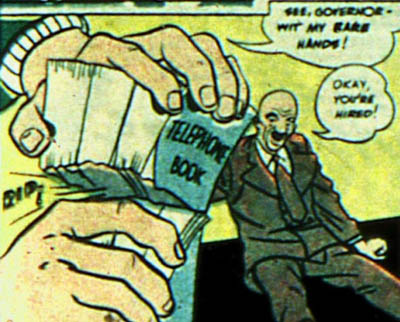
Johnny goes undercover at the circus to find out what is happening.
I’m guessing he’s going as either “World’s Ugliest Man” or “World’s Smallest Face”.
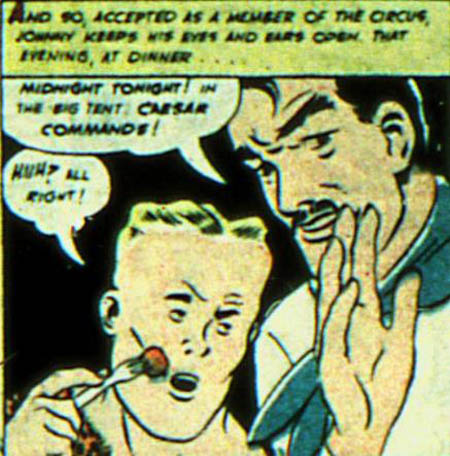
This is kind of hard to follow, both because of the bad quality of the scan and the bad quality of the storytelling, but I think the circus owner is using the performers to commit crimes.
I have no idea if the second panel here is supposed to be him using an acrobat.
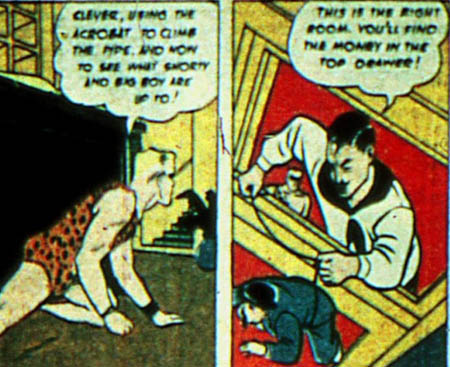
Johnny is caught by an electrified trap, and he’s gagged so he can’t even say the formula.
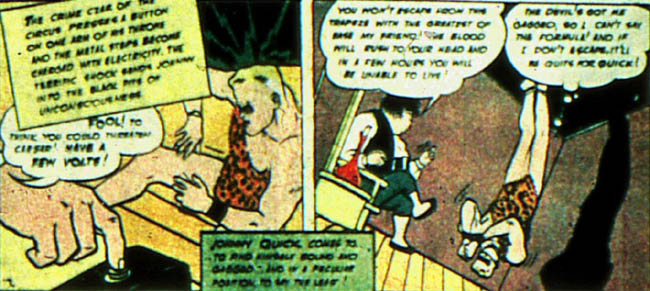
But he manages to escape by breaking his watch and using its glass to cut the ropes.
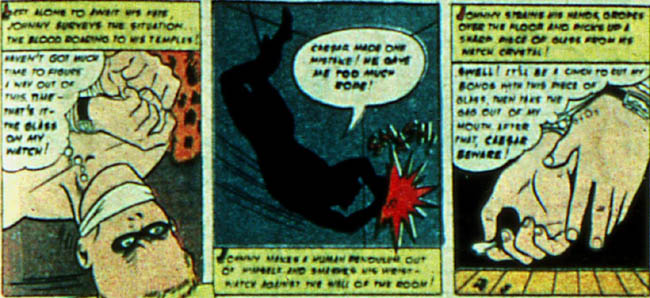
See, I told you the strongman wouldn’t be an issue.
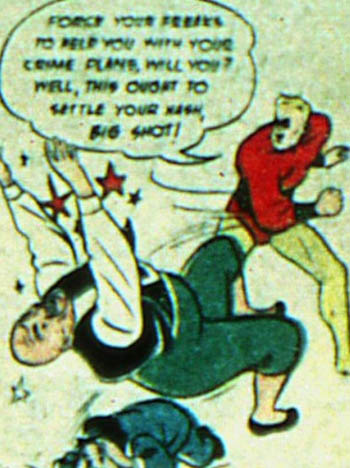
I have no idea of what the characters are saying because of the bad scan quality.
In my headcanon they’re offering him to stay as “World’s Ugliest Man”.
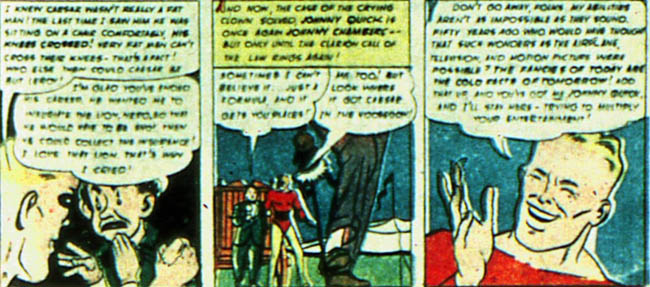
Historical significance: (8-6)+2-3 / 10
Johnny Quick will be little more than a footnote for decades.
Silver Age-ness: (6×2)−(7×2)+3 / 10
Math gives you superpowers!!!
Does it stand the test of time? (5×4)−20+(2×0) / 10
This is reeeeeally bad. The plot is extremely basic, the powers make no sense, Johnny has the personality of a doorknob and the artwork is absolutely atrocious.
How close is this to the modern character? (2×3)−5+4−4 / 10
Aside from the basic formula, nothing else truly remains.
For reasons that frankly escape me, Johnny Quick managed to be popular enough to last on More Fun Comics all the way to 1946’s #107.
He even got the cover a couple times.
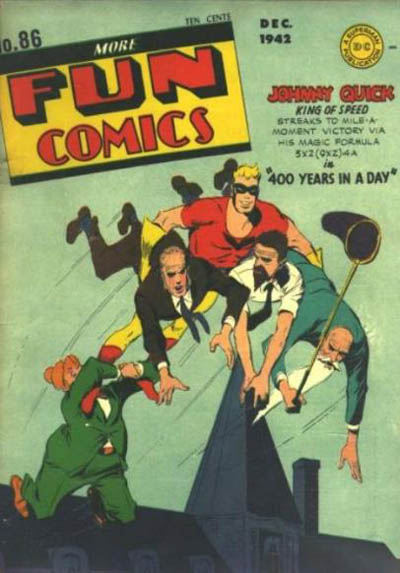
He then moved over to Adventure Comics starting from #103 and would last there all the way until #207 in 1954.
I would joke that it’s because Mort Weisinger was the editor of the book, but to be fair he wouldn’t be the editor until #185.
This is particularly impressive because “Flash Comics” lasted only until 1949, with the original Flash moving over to “All-Star Comics” which lasted until 1951.
This means that Johnny Quick outlasted Jay Garrick!!!
Kind of shocking considering that nobody ever talks about the Johnny Quick run, which also includes stories written by Otto Binder (including the last one).

Speaking of stories nobody ever talks about, Adventure Comics #181 includes what is possibly the only DC speedster that was connected to the Flash mythos: “Joanie Swift, the Queen of Speed”.
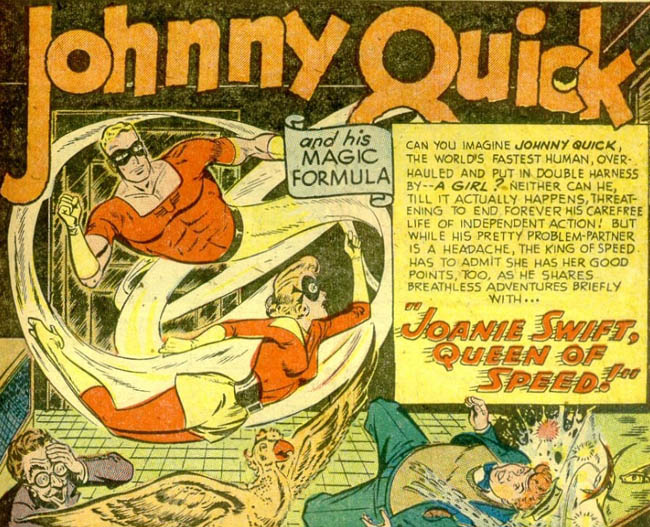
Who, by the way, gets super-speed because she says the magic math formula by sheer coincidence.
And yes, Joanie Swift is her actual name.
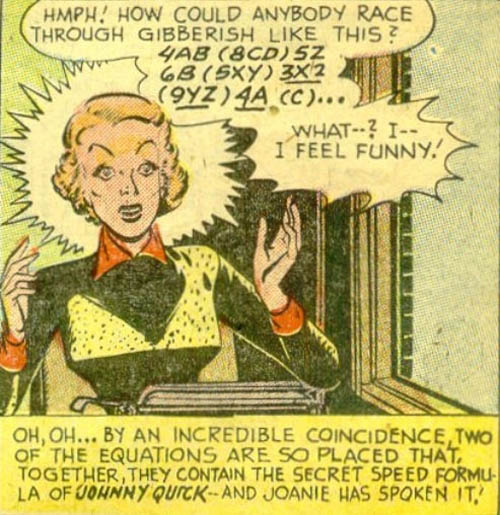
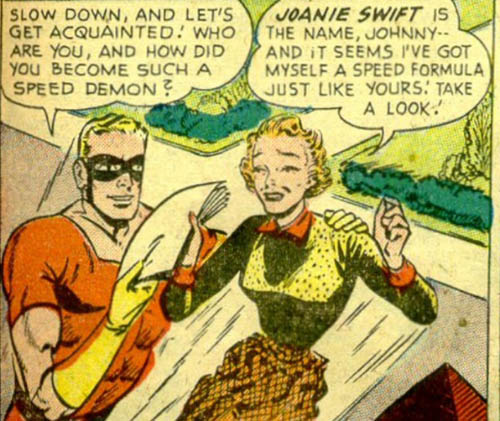
She’s so great at being a hero, and so insistent in trying to romance Johnny, that he grows jealous of her.
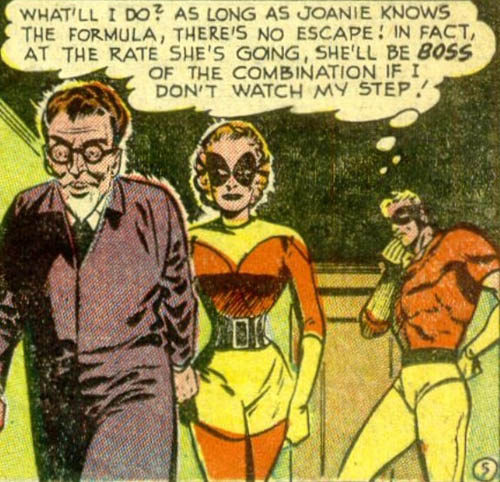
So despite the fact that she’s terrified of mice, as any woman in comics in the 1950s…
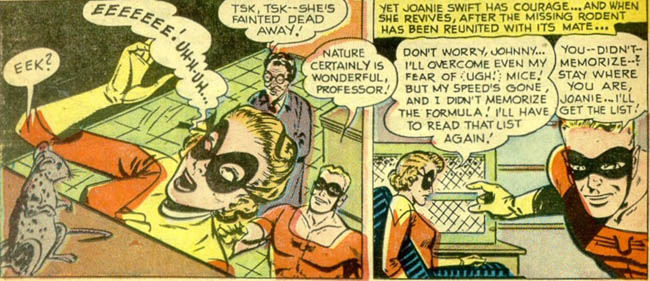
…he makes sure that she loses her powers forever.
Our hero, ladies and gentlemen!
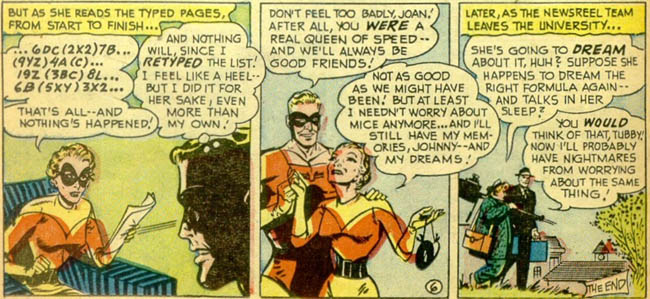
For reasons I truly can’t understand, ten years later we would get a completely different Johnny Quick: an evil one, part of the Crime Syndicate, in Justice League of America #29.
It’s not even because of Weisinger since he wasn’t the editor there, it was a Julius Schwartz book.
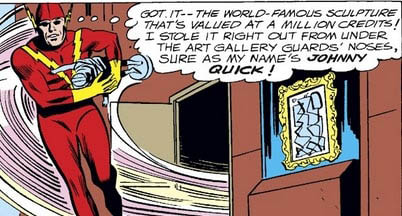
The original Johnny Quick would have to wait 1978 before he showed up again, on DC Special Series #11.
You would expect this to be a Roy Thomas story, but it’s Cary Bates one where he meets the original Flash.
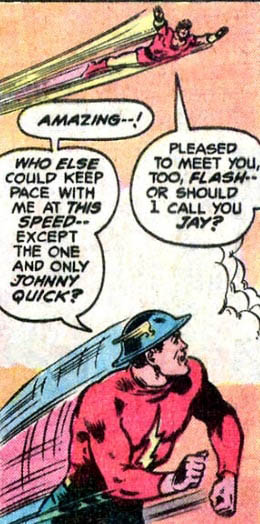
I don’t know what’s weirder, than adding an X to the magic math formula still gives him powers but makes him insane, or the fact that it’s the idea of a telepathic super-gorilla.
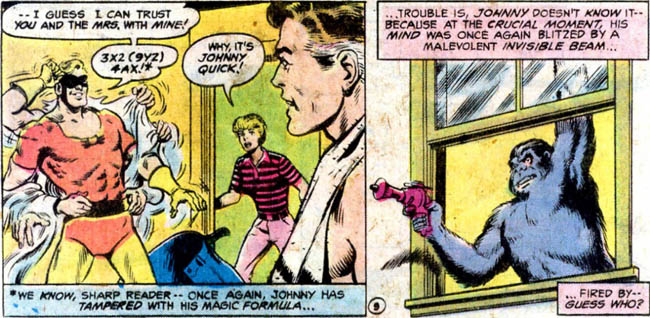

Johnny would later be an important character in All-Star Squadron, by Roy Thomas of course.
He eventually marries fellow Golden Age superhero Liberty Belle there.
The two have a good dynamic in the series; he’s an interesting character there.
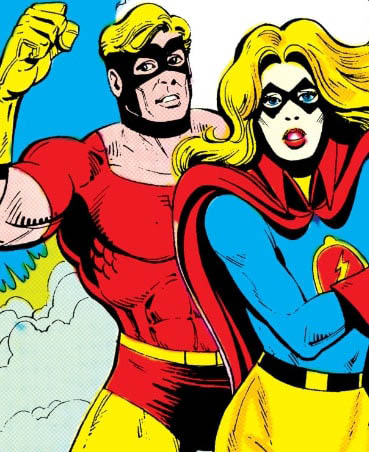
The couple later divorces. He’s not too heartbroken about it.
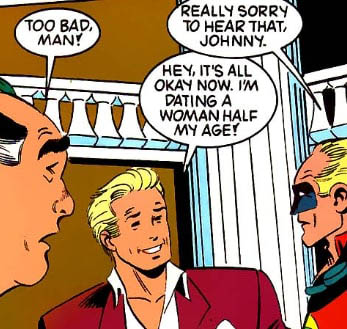
Johnny and Liberty Belle’s daughter becomes the heroine Jesse Quick in 1992.
She inherits his speed thanks to the magic math formula, but she’s also cursed to have terrible taste in costumes. Seriously, Jesse has like two decent costumes and a hundred terrible ones!
I’m partial to the look she had the first time I saw her, during the Mark Waid run on Flash, but she later gets some real stinkers.
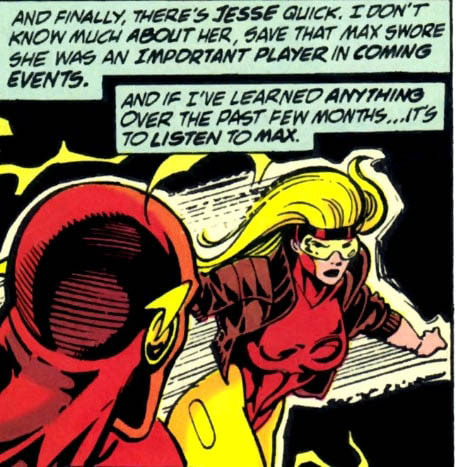
This was during the same storyline that introduced the Speed Force, which gave the first explanation for the magic math formula: it was a mantra Johnny used to connect to it.
Although Johnny was way more skeptic than the other speedsters…
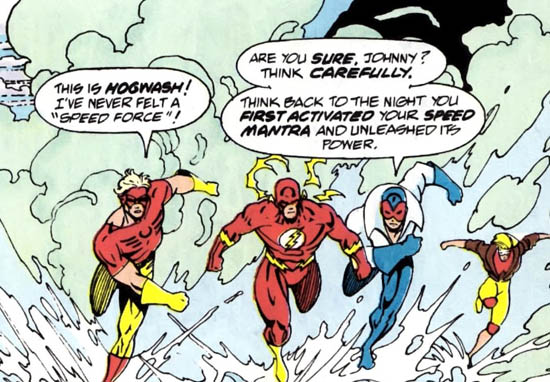
…until he sacrifices himself by entering the Speed Force in 1996’s Impulse #11.
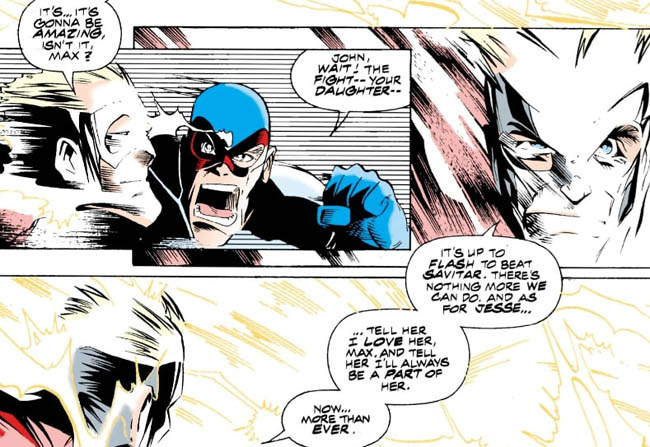
That was a poetic finale.
So of course they had to drag him out of the Speed Force in 2009, with Reverse-Flash killing him for good in The Flash: Rebirth #3.
Because Geoff Johns just CANNOT avoid screwing up stories that already had an ending.
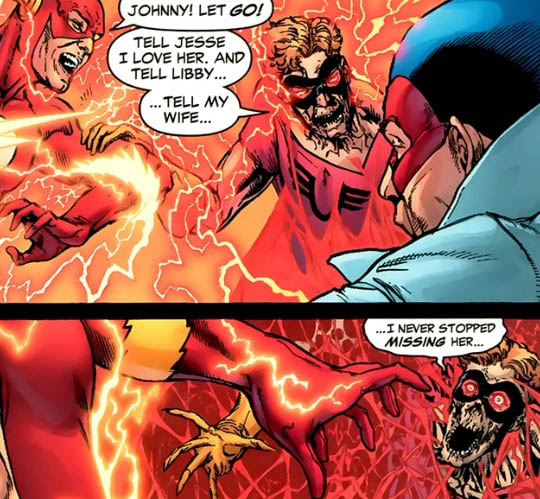
The evil Johnny Quick from the Crime Syndicate is still around, but as far as I know Johnny Quick has not returned yet.
Considering DC isn’t exactly lacking in speedsters, it’s fair to say his daughter has far outshined him.
